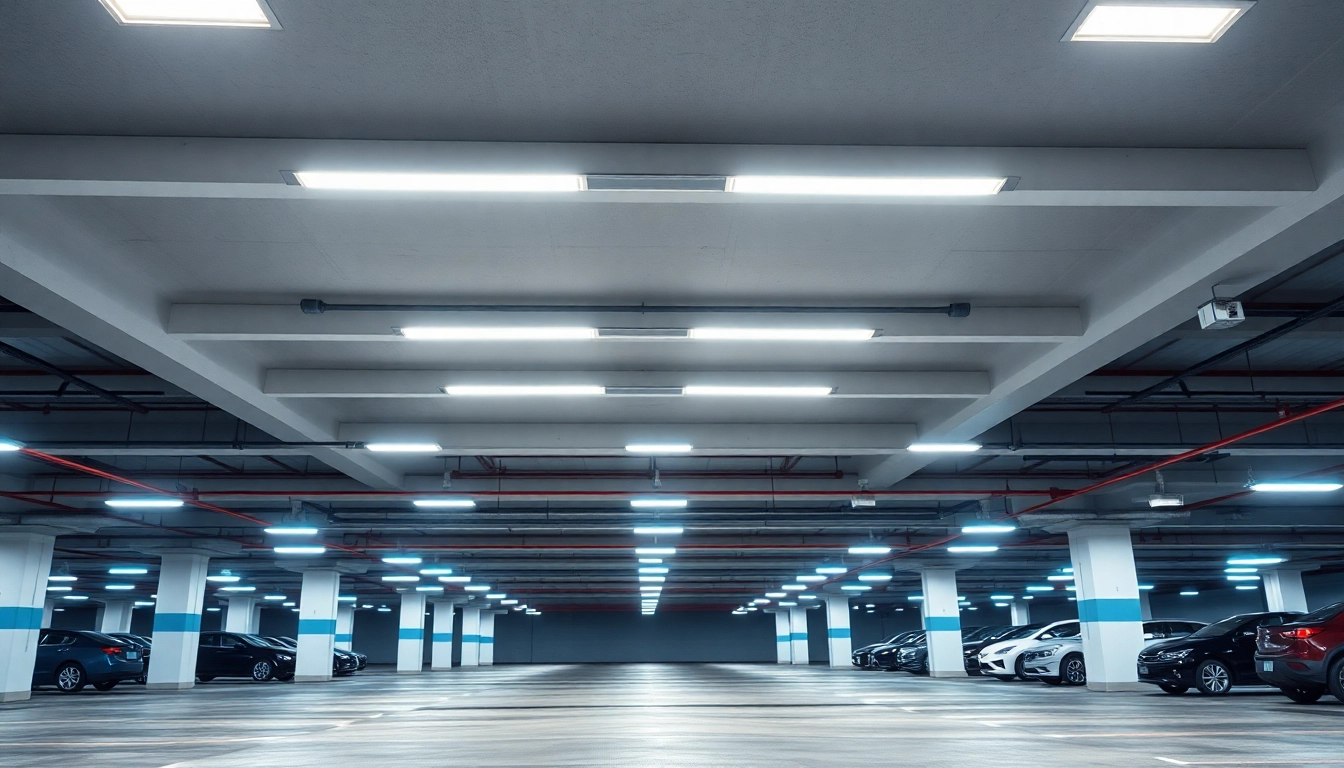When it comes to ensuring safety and efficiency in parking environments, the importance of effective lighting cannot be overstated. A well-lit parking garage not only enhances visibility but also promotes comfort for users. This comprehensive guide delves into the intricacies of Parking Garage Light solutions, focusing on their requirements, types of fixtures, installation best practices, safety enhancements, and performance measures. By understanding these elements, property managers, architects, and designers can make informed decisions that improve both safety and operational efficiency.
Understanding Parking Garage Light Requirements
Importance of Adequate Lighting
The primary function of lighting in a parking garage is to provide adequate visibility. Poor lighting can lead to accidents, reduced user confidence, and increased criminal activity. A well-illuminated space creates a welcoming atmosphere, helping users feel more secure as they navigate the facility. It also provides clear visual cues that can help reduce vehicle and pedestrian traffic conflicts.
Industry Standards and Regulations
Various standards and regulations exist to guide the lighting design of parking garages. The Illuminating Engineering Society (IES) provides recommendations for minimum lighting levels based on the dimensions and usage of the space. For example, IES suggests a minimum illumination level of 2 foot-candles for parking lots and garages, with higher levels in areas such as ramps and entry points to facilitate safe vehicle and pedestrian movement. In addition to IES standards, local and state codes may impose further requirements, particularly regarding energy efficiency and maintenance of safety.
Common Misconceptions About Parking Garage Light
One common misconception is that brighter lights always equal safer conditions. While sufficient lighting is crucial, overly bright lights can create glare that reduces visibility rather than enhancing it. Furthermore, some assume that the installation of lighting equipment is sufficient for safety. However, ongoing maintenance and regular assessments of lighting quality are necessary to ensure that the fixtures are functioning optimally.
Types of Parking Garage Light Fixtures
LED vs. Traditional Lighting Options
Lighting options for parking garages typically include traditional incandescent or fluorescent fixtures and modern LED systems. LED lights are increasingly preferred due to their energy efficiency, long lifespan, and low heat output. While traditional lamps may have a lower upfront cost, the long-term operational savings of LED systems often make them the better choice. Additionally, LEDs provide instant illumination and do not flicker, which can enhance the user experience further.
Design and Aesthetic Considerations
Beyond functionality, aesthetic factors play a role in deciding on lighting solutions. The design of fixtures can enhance the visual appeal of the garage and contribute to the overall branding of a property. Architects and designers should consider the architectural style of the building when selecting lighting fixtures, opting for designs that complement the existing structure while still meeting safety and efficiency standards.
Energy Efficiency and Cost Savings
Energy efficiency has become a significant consideration in parking garage lighting. The deployment of LED fixtures reduces energy consumption significantly when compared to traditional sources, resulting in lower utility bills. Moreover, many local governments provide incentives for energy-efficient upgrades, which can further reduce the initial investment. Property managers can also benefit from using motion sensors, which can adjust lighting levels based on occupancy, leading to tangible cost savings over time.
Best Practices for Parking Garage Light Installation
Strategic Placement for Maximum Coverage
The strategic placement of lighting fixtures is crucial for maximizing coverage in a parking garage. Fixtures should be positioned so that the light reaches all areas without creating shadows. Overhead fixture placement, combined with wall-mounted options, can help create a well-illuminated space that enhances visibility. It’s also essential to consider the vertical surfaces in a garage, as illuminating these surfaces can help define the space and improve user perception of safety.
Maintaining Consistent Illumination
To prevent dark spots and ensure consistent illumination, regular maintenance and inspections of lighting systems should be adopted as a best practice. This includes cleaning fixtures, replacing burnt-out bulbs promptly, and assessing the overall performance of the lighting setup. Implementing a maintenance schedule can ensure that the garage remains well-lit and that safety is upheld at all times.
Integration with Smart Technology
Integrating intelligent lighting solutions can further enhance the performance of parking garage light systems. Smart technology can adjust lighting levels based on real-time occupancy, enhancing both energy savings and user comfort. Monitoring systems that track performance data can also be invaluable for property managers to understand usage patterns and optimize lighting strategies accordingly.
Improving Safety with Parking Garage Light Systems
Creating a Safe Environment for Users
Creating a safe environment goes beyond simply installing lighting; it involves designing a system that enhances user confidence and safety. Proper lighting can deter crime and enhance surveillance efforts. Parking garages that feature bright, uniform lighting are perceived by users to be safer than those with dim areas or inconsistent illumination.
Responding to Emergency Situations
Emergency response capabilities can be improved with strategic lighting design. Emergency lighting that activates during power failures or emergency situations can provide critical visibility when needed most. Additionally, incorporating exit signs with clear illumination can help users navigate quickly and safely in emergencies.
Enhancing User Perception and Confidence
User perception is an integral part of the safety equation. A well-lit garage can instill a sense of security, encouraging users to utilize the space without apprehension. This can lead to increased usage rates and, ultimately, higher revenue for property managers. In contrast, lighting deficiencies can decrease user confidence and lead to lower occupancy rates.
Measuring Performance of Parking Garage Light Solutions
Key Metrics for Evaluating Effectiveness
To assess the effectiveness of parking garage lighting, key metrics can be monitored. These include average illuminance levels throughout the space, incidence of accidents or safety incidents, energy consumption figures, and user feedback. By gathering and analyzing this data, property managers can make data-driven decisions to enhance their lighting systems continuously.
Regular Maintenance and Upkeep Practices
Implementing regular maintenance protocols is essential to ensure that lighting systems perform optimally over time. Maintenance practices should include visual inspections, cleaning fixtures, checking for damage, and replacing components as necessary. These actions not only preserve safety but also extend the lifespan of the lighting fixtures, providing long-term value.
Future Trends in Parking Garage Light Technology
The domain of parking garage lighting is evolving rapidly, with trends such as smart lighting and solar-powered options gaining traction. Future lighting systems are expected to focus on integrating advanced technology offering real-time data insights, not only improving energy efficiency but also enhancing user experiences through adaptable lighting solutions. As smart cities continue to develop, the role of lighting in urban infrastructure will become increasingly significant, paving the way for innovative solutions that prioritize safety and sustainability.




